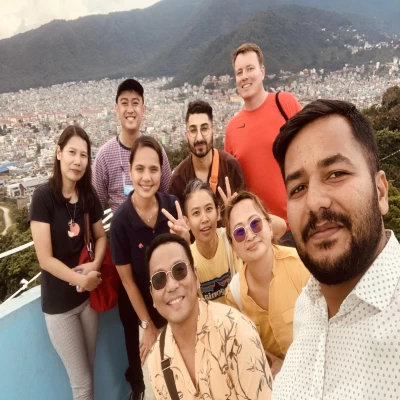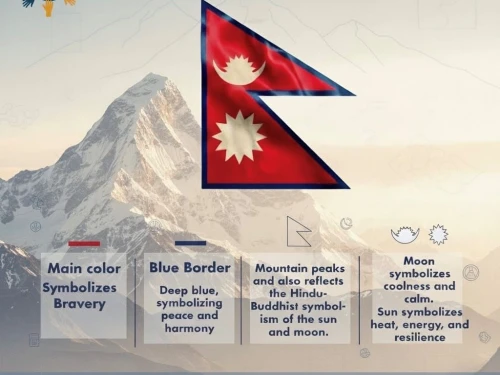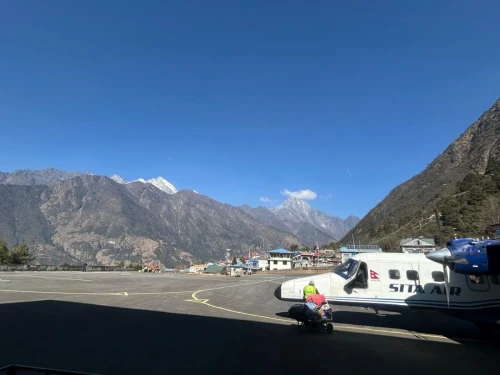Kumari : The Living Goddess of Nepal
Nepal is a multicultural, multi-religious, and multilingual country with strong religious beliefs in various cultures and traditions. One of the most popular traditions among the Hindu and Buddhist Newari communities of Nepal is the Kumari tradition of the Living Goddess.
The Kumari Practice also known as the Living Goddess of Nepal, is a unique cultural and spiritual tradition observed only in the Newari community in Kathmandu Valley and other nearby districts. In this culture, a young prepubescent girl from the Newar community is selected from the Shakya Clan through a rigorous process based on their physical and spiritual qualities.
This Living Goddess Kumari is believed to be a reincarnation of the goddess Taleju and Durga inside a female deity, a 3-to 5-year-old girl's body. The kumari word comes from the Sanskrit word for princess. Additionally, the kumari resides in the Kumari Ghar, a beautifully crafted place in Kathmandu Durbar Square, where devotees and visitors come to seek blessings and witness this extraordinary living tradition.

Current Living Goddess of Kathmandu: Trishna Shakya
History of the Living Goddess Kumari Culture
The traditional history of the living goddess Kumari is a centuries-old culture and religious practice in the Newar community in Nepal. Although the worship of the living goddess Kumari is relatively recent in Nepal, the cultural practice of worshipping the Kumari has existed since around the 17th century when King Jayprakash Malla initiated the tradition after a vision of Taleju instructed him to worship a young virgin girl.
This Goddess Kumari, chosen from the Newar Shakya Caste, undergoes various selection processes to meet all physical and spiritual perfections, symbolizing purity and divine power. This proof of virgin worship has taken place in Nepal for more than 2300 years. There is written evidence, and Many legends tell how the modern cultural tradition of the Kumari began.
Many legends say many thoughts but all Nepalese especially Newar people celebrated the festival of Indra Jatra and installed her as the living incarnation of Durga in Kathmandu and nearly other districts.
How to choose Kumari Goddess in Nepal?
The selection process for Kumari in Nepal is a centuries-old tradition rooted in Newari culture and Hindu-Buddhist beliefs. Especially, the kumari is chosen from the Sakya and Bajracharya caste of the Newar community, typically around the 2 to 5 years virgin girls.
The selection process is carried out by five senior Buddhist Vajracharya priests, the priest of Taleju, the Bada Guruju or Chief Royal Priest, Achajau, the Panch Buddha, and the royal astrologer. Key criteria of the eligible girls in the kumari include 32 physical perfections, such as flawless complexion, a soft voice, excellent health, and perfectly shaped eyes. They must not have yet lost any teeth.
In addition, Kumari's eyes or hair should be black, with perfect hands and feet, and her skin tone should be white or dusty, she should have 20 baby teeth, small and well-recessed sexual organs, and a pure round body.
Some of the Characters of Kumari Are
- A body like a banyan tree
- Thighs like a deer
- Chest like a lion
- A neck like a conch shell
- Voice as soft and clear as a duck's
- Eyelashes like a cow
Significance of Goddess Kumari in Nepalese Culture
The Kumari living goddess holds important significance in Nepalese culture, especially among the Newar community of the Kathmandu valley. The kumari is called the living goddess, kumari is revered as an embodiment of the Hindu goddess Taleju Bhawani and is considered the goddess of shakti, or divine power of the inside body. She manifests the divine feminine energy, and her blessings are believed to bring peace and prosperity to the country.
Additionally, she represents peace, country prosperity, the unity of Hindu or Buddhist beliefs, and the purity of the feminine divine. Furthermore, she preserves the immediate, profound spiritual and cultural heritage of Nepal in the ancient tradition of Kumari culture. Thus, Kumari is selected from the Shakya clan of the Nepali Newar community and lives in the Kumari house.
The kumari plays a crucial role in festivals, especially during Indra Jatra, the major festival in Kathmandu and other nearby valley districts. During this festival, the kumari takes to the streets, guarding thousands of devotees and tourists.
In addition, her presence represents the divine protection of the nation and its people. Finally, this practice also emphasizes the harmonious coexistence of Hindu and Buddhist communities in the country.
Royal Kumaris of Kathmandu:
| Name | Hometown | Dates as a Kumari | City |
| Hira Maiya Shakya | Wotu | 1922–1923 | Kathmandu |
| Chini Shova Shakya | Lagan | 1923–1931 | Kathmandu |
| Chandra Devi Shakya | Asonchowk | 1931–1933 | Kathmandu |
| Dil Kumari Shakya | Lagan | 1933–1942 | Kathmandu |
Nani Shova Shakya | Ombahal | 1942–1949 | Kathmandu |
| Kayo Mayju Shakya | Kwahiti | 1942-1955 | Kathmandu |
| Harsha Lakshmi Shakya | Naghal | 1955–1961 | Kathmandu |
| Nani Mayju Shakya | Naghal | 1961–1969 | Kathmandu |
| Sunina Shakya | Ombahal | 1969–1978 | Kathmandu |
| Anita Shakya | Sikamoobahal | 1978–1984 | Kathmandu |
| Rashmila Shakya | Kwahiti | 1984–1991 | Kathmandu |
| Amita Shakya | Asanbahal | 1991–2001 | Kathmandu |
| Preeti Shakya | Itumbahal | 2001-2008 | Kathmandu |
| Matina Shakya | Itumbahal | 2008–2017 | Kathmandu |
| Trishna Shakya | Ombahal | 2017- | Kathmandu |
Who is the Living Goddess Kumari?
The kumari is a young prepubescent girl chosen from the Newar community in Nepal to be the living incarnation of the Hindu Goddess Taleju.
What are the Kumari’s Duties?
The kumari blessing devotees during religious festivals, and representing divine energy in major ceremonies like Indra Jatra. Additionally, maintains a sacred presence as a living deity.
Who is the Current oldest Kumari goddess in Nepal?
Miss Dhana Kumari Bajracharya is the former oldest Kumari goddess in Nepal and hails from Patan. She was elected a Kumari in 1954 when she was 2 years old, and now she is the 71-year-old Kumari continues to follow the Kumari lifestyle because she has never menstruated.
Who is the recent Kumari Goddess in Kathmandu Nepal?
The current Royal Kumari of Kathmandu is Trishna Shakya selected in 2017 and now she is running 9 Years old.



.webp)
.webp)




